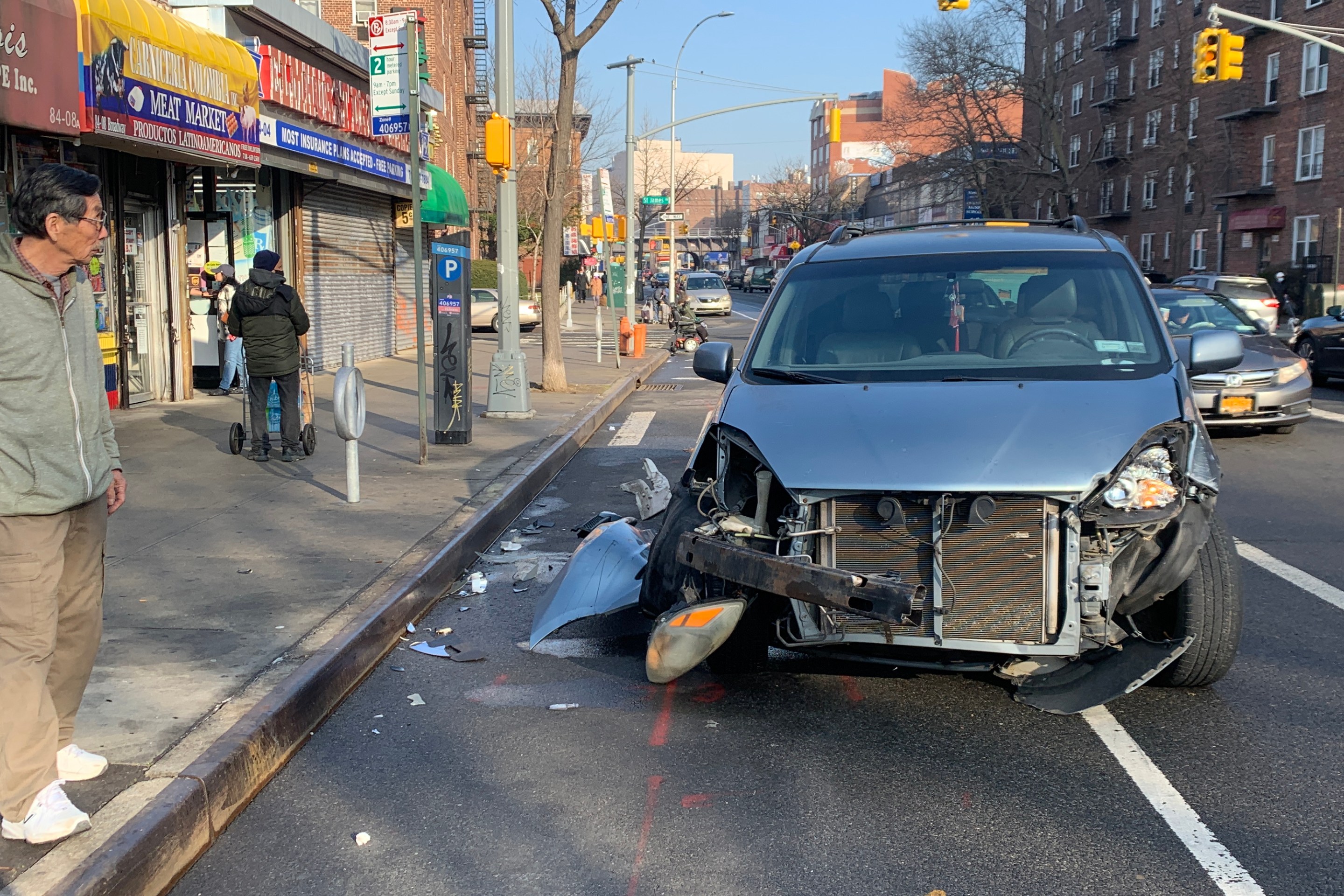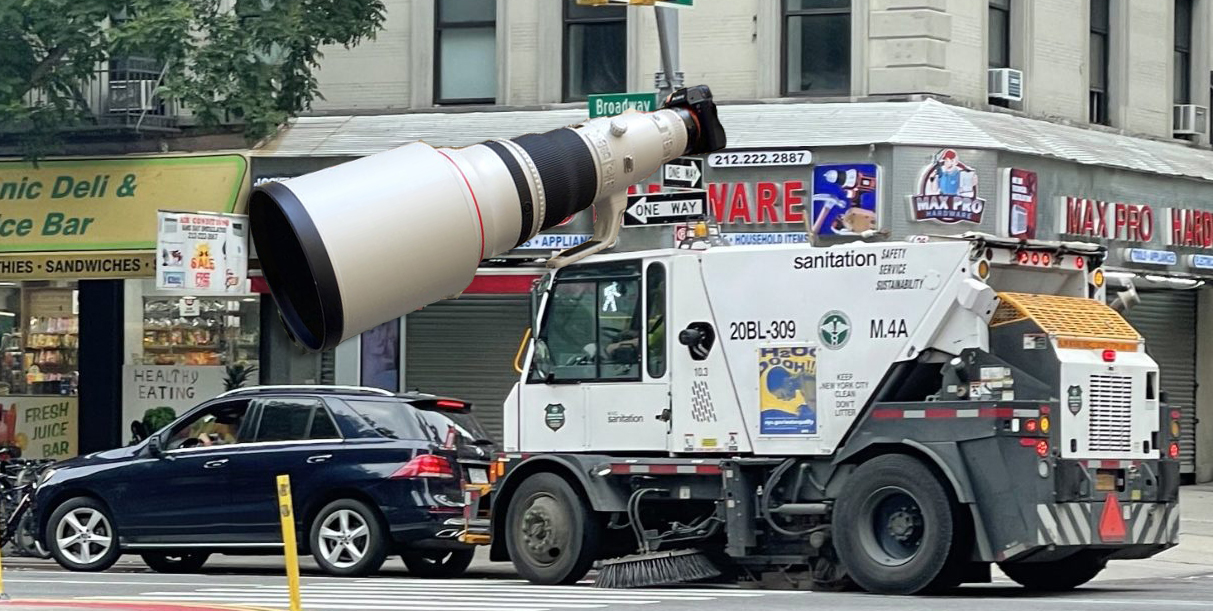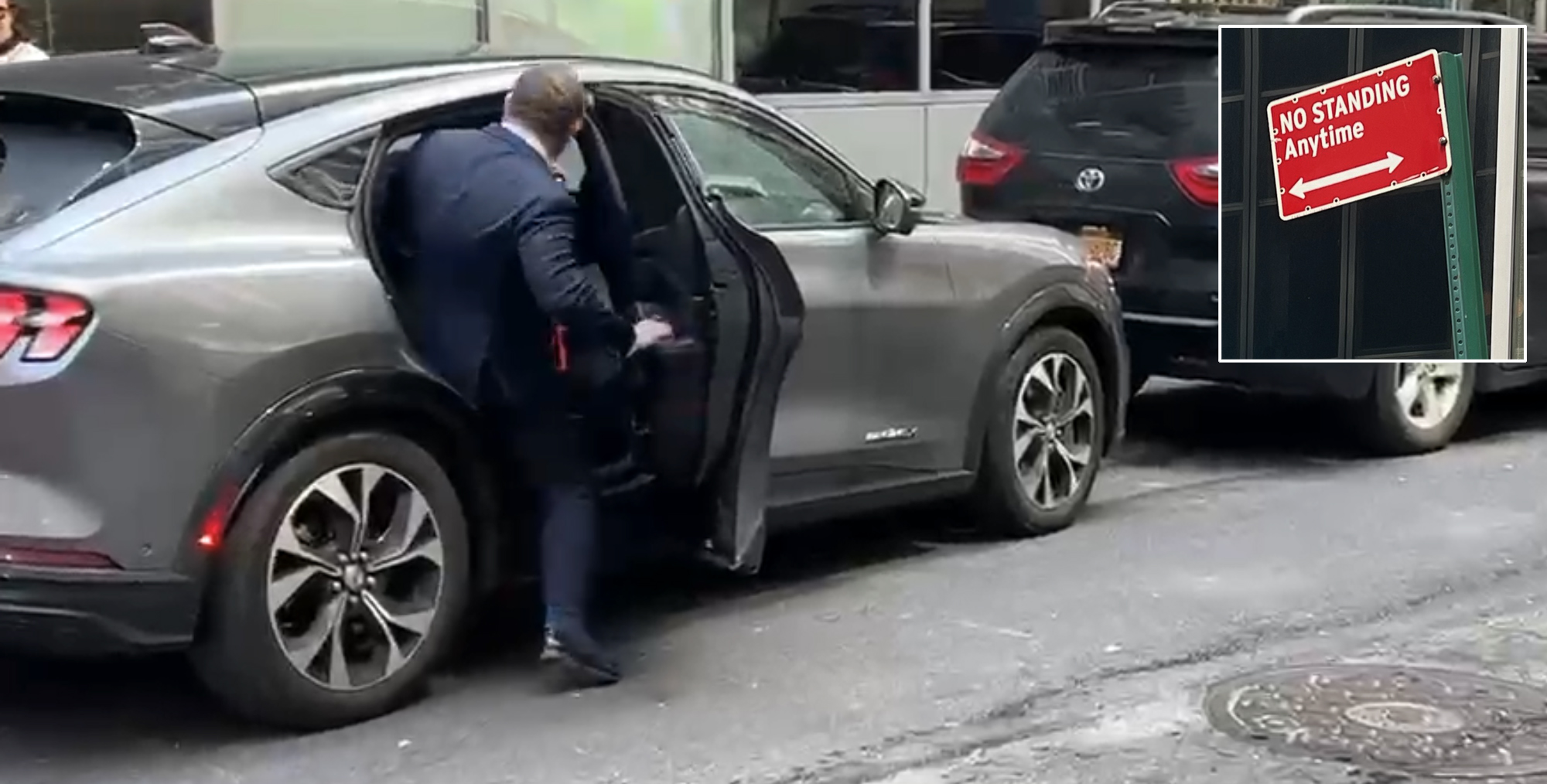The Department of City Planning proposed new rules last week that should keep sidewalks safer and reduce conflicts between pedestrians and cars. The zoning regs, if approved, would also cut down on the proliferation of "parking pads" -- off-street spaces paved over front yards -- in some parts of the city. Overall, the amendment includes some much-needed measures to keep the pedestrian environment from deteriorating. But not all the news is good: The amendment also creates a new rule, reinforcing parking requirements for
residential buildings.
The "Residential Streetscape Preservation Text Amendment" prohibits paving over front yards to create curb-cutting driveways, keeping sidewalks safer and more intact for pedestrians. The amendment also places several restrictions on where property owners can build curb cuts. (You can see all the proposed rules in this presentation.) Basically, it's an attempt to keep space for cars from destroying the quality of space for pedestrians.
The ban on parking pads should put a halt to the proliferation of curb-cuts in certain neighborhoods. "To the extent that this text amendment is effective, that will be a boon," said Rachel Weinberger, a planning professor at the University of Pennsylvania and co-author of Suburbanizing the City, the 2008 report that examined New York City's decidedly unsustainable off-street parking policies [PDF]. "When people are paving over their front yards, that implies they're
driving across the sidewalk, which is an incredibly dangerous thing."
The new rules would also create important protections in addition to the parking pad ban. One requirement sets out to prevent the addition of off-street parking in parts of Manhattan and western Queens if the new curb-cut "adversely affects" pedestrian movement. "DCP's proposed change appears to be a real shift in that policy," said Lindsey Lusher-Shute of Transportation Alternatives. "Of course, the effectiveness of this measure will be determined by the definition of 'adverse effects,' but this is a step in the right direction."
As City Room reported last week, much of the impetus for the new rules appears to have come from community boards in neighborhoods like Dyker Heights and Bay Ridge, where paved yards have rapidly spread as homeowners race to secure their own personal space for car storage. While the zoning amendment would put a stop to that particular turf war, it also gives in to the territorial instinct by creating new parking requirements.
"Unfortunately, these regulations perpetuate the now 50-year-old practice of requiring developers to build parking when they add units to existing housing," said Lusher-Shute. "In neighborhoods with excellent access to public transportation, requiring parking is costly, unnecessary and will cause more traffic congestion over the long term."
The zoning amendment is now proceeding through the public review process, including stops at all 59 community boards, the borough presidents' offices, the City Planning Commission, and the City Council.





